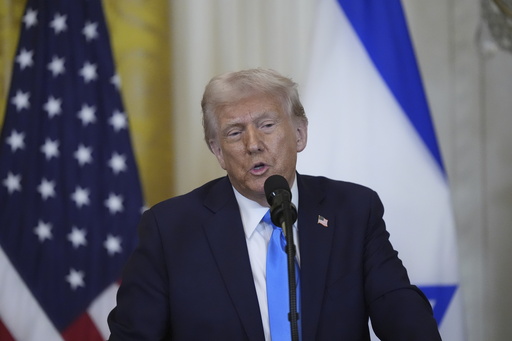
President Donald Trump plans to sign an executive order on Wednesday that would effectively bar individuals assigned male at birth from participating in sports designated for women and girls.
This executive directive, expected to be formalized during a ceremony later in the afternoon, signifies a major shift in how the current administration addresses transgender rights. Just last month, the president introduced a comprehensive order on his first day in office, aiming to define sex strictly as male or female, changes which would be reflected across official documents like passports and influence policies such as those governing federal prison assignments.
During the campaign, Trump discovered that his commitment to keep “men out of women’s sports” appealed to a demographic that extended beyond traditional political boundaries. A majority of voters surveyed indicated that the support for transgender rights has overstepped its boundaries within governmental and societal contexts.
He intensified his rhetoric as the election approached, vowing to eliminate what he referred to as “transgender insanity,” although his campaign had limited specifics on how that would be achieved.
The forthcoming order aligns with National Girls and Women in Sports Day and will reshape how his administration interprets Title IX, the significant law aimed at achieving gender equity in athletics and addressing issues of sexual harassment on college campuses.
“This executive order restores fairness, upholds Title IX’s original intent, and defends the rights of female athletes who have worked their whole lives to compete at the highest levels,” stated U.S. Representative Nancy Mace, a Republican from South Carolina.
Every presidential administration possesses the power to issue unique interpretations of this iconic legislation, with recent administrations showcasing an ongoing tug-of-war on the topic.
During Trump’s first term, former Education Secretary Betsy DeVos enacted a Title IX policy in 2020 that tightened the definition of sexual harassment and stipulated that investigations into such claims be initiated only if reported to designated officials.
Subsequently, the Biden administration rescinded that policy last April, rolling out its own protections for LGBTQ+ students under federal law, while also introducing new measures for victims of sexual assault on campuses. However, this policy did not specifically address the participation of transgender athletes. Following this, several Republican-led states quickly initiated legal challenges against the revised rule.
“This could simply be summarized as Trump stating, ‘We will interpret the regulations in a traditional manner’,” commented Doriane Lambelet Coleman, a professor at Duke Law School.
The potential impacts of this order on transgender athletes remain uncertain, in part due to the difficulty in quantifying this population.
A 2021 report mentioned that in many of the states proposing bans on transgender athletes, lawmakers struggled to present instances that warranted such restrictions. For example, when Utah’s legislature overruled Governor Spencer Cox’s veto in 2022, only one transgender girl was actively competing in K-12 sports in a manner that would be affected. Furthermore, the state’s regulations did not extend to transgender boys.
“This appears to be a solution in search of a problem,” remarked Cheryl Cooky, a Purdue University professor specializing in the intersections of gender, sports, media, and culture. This sentiment was expressed shortly after Trump’s election.
Yet, the actual figures surrounding transgender athletes seem almost irrelevant. Whenever a transgender female athlete competes—or is even believed to be competing—it attracts significant media attention, as highlighted by cases like Lia Thomas swimming for the University of Pennsylvania and the most recent season of the San Jose State volleyball team.

